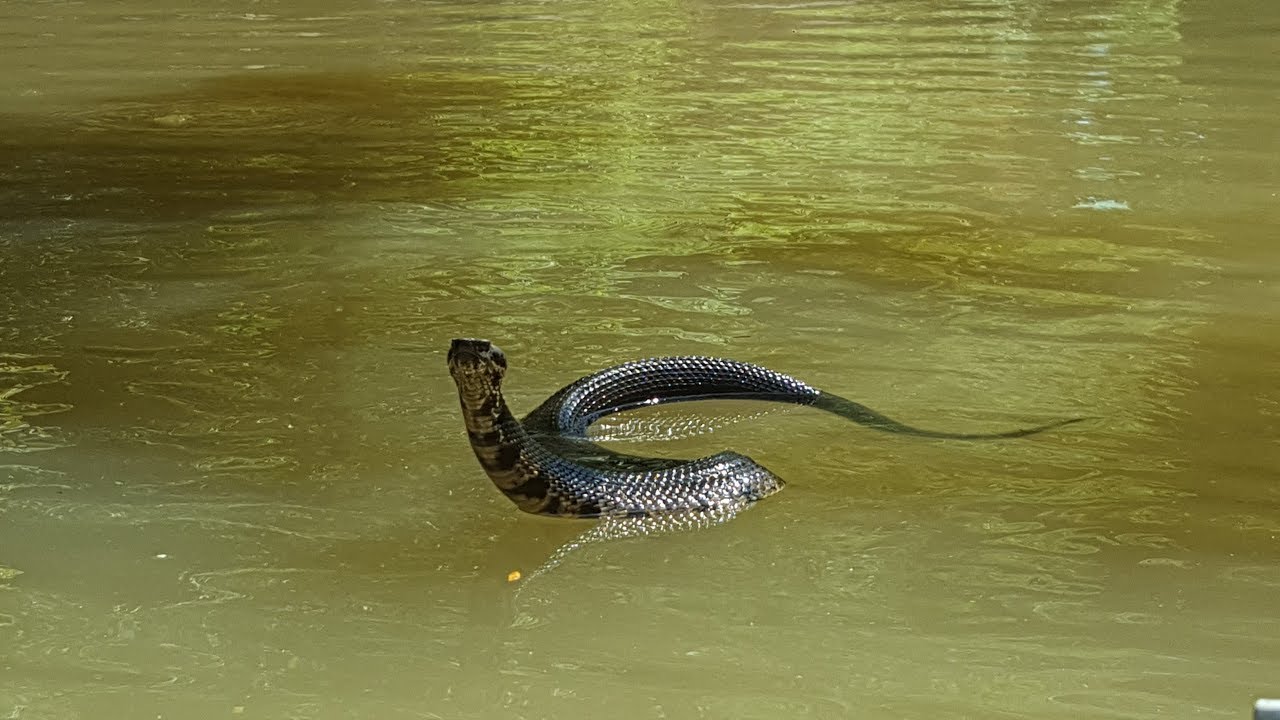UPDATE: How to Identify a Cottonmouth I have received many comments on this video stating that this is a harmless water snake and not a cottonmouth so I thought that I would help everyone with their identification of these snakes. This is 100% a cottonmouth (water moccasin, Agistrodon piscivorus). There are multiple cues we can use to determine this. First, the thing that everyone notices from this video is that this snake is floating. All large bodied pit vipers (including cottonmouths) tend to swim with most of their bodies above the surface of the water while water snakes tend to swim with most of their body under the surface with just their head above water. However, this is not always reliable as any snake can do both if they want to so we need to use other clues to confirm that this is a cottonmouth. A common characteristic of cottonmouths is that they tend to hold their head up off of the water’s surface as this snake does. Next, we can look at the physical characteristics of this snake. Cottonmouths have very thick bodies that taper towards the head with the head being noticeably wider than the neck. Their heads are triangular in shape and have very angular, squared edges. Cottonmouths also have a dark facial stripe that runs through the eye. Cottonmouths tend to be very dark black as adults but many still have a discernible pattern of dark bands or fuzzy hourglass shapes. The snake in this video is a particularly pretty adult cottonmouth in that much of its pattern is still visible. Being pit vipers, cottonmouths have the characteristic facial pits used for detecting infrared light. I would also like to point out that I was in the boat and have a considerably better vantage point so some of these features may not be visible in this video.
